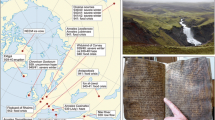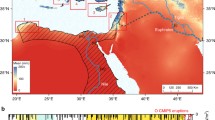Abstract
The Minoan eruption of Santorini was a large-magnitude natural event. However, in terms of scale it ranks smaller in erupted volume and eruptive intensity than the historical eruption of Tambora in 1815 AD, and smaller in sulphur emission and, by inference, climatic effects than both the Tambora and Mt. Pinatubo, 1991, eruptions. Eruption statistics for the past 2000 years indicate that Minoan-size eruptions typically occur at a rate of several per thousand years. Eruptions resulting in a Minoan-scale injection of sulphur to the stratosphere occur far more frequently – at a rate of one or two per century. Inferences of massive sociological, religious and political impacts from such eruptions owe more to mythology than reality.
Similar content being viewed by others
Author information
Authors and Affiliations
Additional information
Received: 28 November 1995 · Accepted: 9 January 1996
Rights and permissions
About this article
Cite this article
Pyle, D. The global impact of the Minoan eruption of Santorini, Greece. Environmental Geology 30, 59–61 (1997). https://doi.org/10.1007/s002540050132
Issue Date:
DOI: https://doi.org/10.1007/s002540050132




